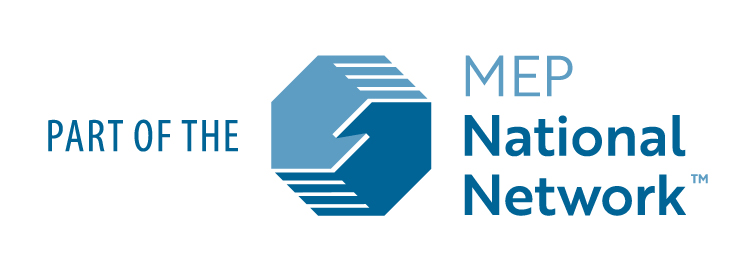Monday, March 04 2024
Driving Cost Value in Your Supply Chain
Written by Tim McDonnell, Supply Chain Services Specialist

Customer-centric supply chain organizations challenge themselves to develop supply chains to be resilient and agile, as well as cost effective, at the same time meeting the varied and evolving customer needs and demands - all aligned with main business objectives. While all are essential, each year brings different business priorities, and your supply chain must be adaptable to support the priority of your business at the time.
This year, with inflation decelerating from its decades level high and pricing stabilizing, cost management is the focus of many manufacturers. According to The Hackett Group annual survey of supply chain executives, the top priority for 2024 is to improve supply chain cost efficiency – material costs, labor costs, transportation costs, working capital (e.g. inventory, payables), etc. It is the first time since the 2020 survey that cost efficiency has been the top priority.
How can SMMs (Small and Medium Manufacturers) begin to address cost reduction efforts?
Many supply markets have stabilized to more pre-pandemic norms, so it’s not surprising this year there is an emphasis on cost management. For SMMs in the lower tiers (tier 2-4) of the manufacturing supply chain, the cost pressure from OEM and Tier 1 customers will likely intensify.
All cost management actions begin with communication to your suppliers on your business objectives, your expectations from your suppliers, and the ability to work collaboratively with them on actions and solutions to meet your objectives. For these communications, it is helpful to be prepared ahead of time – understand your spend with each supplier, have cost breakdowns if available, and be aware of material index trends for metals, plastics, oil, and others where you can tie raw material for purchased components back to it.
Supply chain costs are also more than the purchase material order price – understanding your labor processing or value add costs, transportation costs, inventory levels, and payables are areas of savings to discuss with suppliers. You should try to quantify these costs or, at least, be aware of all costs that affect margins and cash flow.
What Supply Chain Cost Management Actions Can SMMs Take to Protect Margins
Once prepared with your cost information, there are various supply management actions that an SMM can take to emphasize cost management and expectations with suppliers:
Cost Productivity Workshops
Cost productivity workshops provide a structured platform for companies to collaboratively work and identify, plan, and implement strategies that enhance efficiency and reduce costs throughout the supply chain. They are most successful if they are structured with an agenda, clear objective, include cross functional participation (e.g. Operations, Engineering, Business Leaders, etc.), and include the supplier you are working with. This cross functional involvement helps ensure alignment of the objective(s). Workshops often include structured activities such as a Gemba walk of the operation, a product teardown, functional design review, material analysis, value stream map of the supply chain, etc. The communication to your supplier should be an expectation that they are to provide cost improvement and waste reduction ideas as part of the team. As ideas are generated, savings should be estimated, actions prioritized, and a workplan developed and managed by a project workshop leader.
VA/VE (Value Analysis / Value Engineering) Analysis
VA/VE can be part of a Cost Productivity Workshop, or a separate event. VA/VE is a cross-functional process designed to focus on the analysis and engineering value in a product. The purpose is to reduce costs and waste and improve quality via design and process continuous improvement actions. VA/VE ideas can be categorized as such since they usually require approvals to implement via an engineering change management process. Again, involving the supplier in a VA/VE workshop to generate cost improvement ideas is strongly recommended.
Negotiations with Suppliers
Large OEMs and Tier 1 manufacturers usually negotiate and enter into multi-clause Supply Agreements or Pricing Agreements with their essential suppliers as part of their relationships. SMMs can do the same. These types of agreements with suppliers can help ensure supply continuity, offer risk protection for supply, provide cost certainty, potentially enable cost reductions, and improve the supply relationship. There is a perception that all negotiations are contentious, particularly when discussing cost. While some negotiations are difficult, effective communication, gathering information in advance, and focusing on the longer-term relationship can help negotiation discussions be productive.
Raw Material Cost Indexing
Suppliers are usually very good at communicating and trying to pass along cost increases when their raw material costs increase. They are not communicative when raw material costs decrease.
An effective way to provide material cost visibility and stability is to enter into a Pricing Agreement with a supplier that ties the material cost of a good to an index and negotiates an agreement to adjust cost based on the movement of that index. Examples of such indices are the London Metal Exchange for metals, the CRU (for steel in the United States), the WTI or Brent for oil, Platts, ICIS or other plastics and chemical indices for polymers and chemicals. Most major indices are at levels lower than the prior couple of years indicating lower material costs. Adjusting prices based on an index and agreed-upon time horizon eliminates wasteful time spent negotiating prices due to material cost changes. It also provides visibility to the business knowing the costs aligned with an index.
What are other supply chain costs that can be addressed to help attain business objectives?
The increase in interest rates during the inflationary cost rise created further financial stress on SMMs. In addition to managing and reducing the cost of goods sold, supply chain management can contribute to improving a company’s cash flow.
Managing and Optimizing Inventory Levels
An effective inventory strategy should be aligned closely with a company’s commercial strategy. Supply shortages have improved greatly over the past couple of years, and companies have adjusted inventory levels lower back to pre-pandemic levels. Companies can use an ABC/XYZ analysis to improve inventory turns while maintaining higher levels of critical component inventory – those components in products that are critical to customer satisfaction. Reducing inventory levels too much and incurring stockouts will not compensate for lost company sales and lower customer satisfaction due to past-due shipments. Companies can also reduce the amount of aged or obsolete inventory that may have accumulated in the past few years.
Managing Pay Terms and Supplier Lead Times
Extending pay terms when interest rates are high may be challenging, particularly for small suppliers. As an alternative to solely discussing pay terms, a more successful approach to improving cash flow is to work with suppliers on multiple options. These include:
- reducing lead times,
- implementing supplier stocking programs, particularly for runners (components that are supplied regularly), and
- exploring milk-run transportation routes or regular deliveries, as alternatives to extending pay terms.
Unique solutions may be implemented for suppliers depending on their size and financial structure.
By combining effective supply management and cost management actions, manufacturers can collaborate with suppliers to enhance their operational efficiency, mitigate risks, and improve their overall financial performance.
Writer: Tim McDonnell, 317-275-6810, tgmcdonn@purdue.edu


